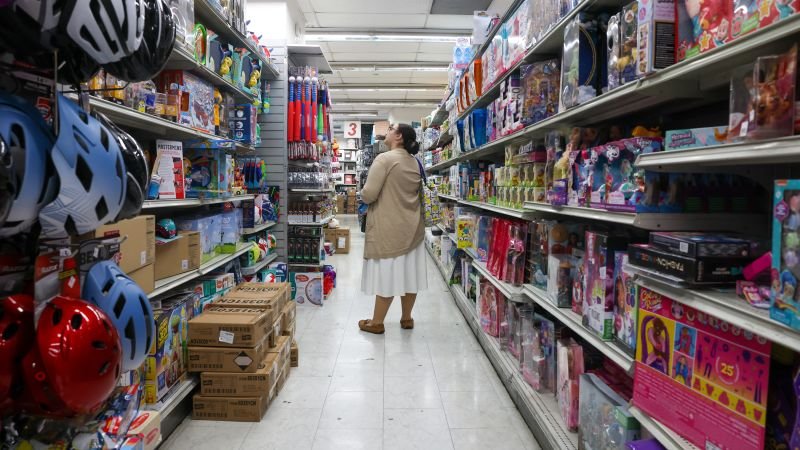Despite ongoing concerns about inflation, rising interest rates, and global economic uncertainty, the U.S. retail sector showed surprising strength in June 2025. According to the latest data released by the U.S. Department of Commerce, retail sales rebounded by 0.6% in June, marking a significant uptick after a relatively flat performance in May.
This increase, while modest, sends a strong signal: consumer spending is holding steady in the face of economic headwinds. For many analysts, this is a sign of underlying confidence in the economy, even as households continue to navigate higher prices and tighter budgets.
What the 0.6% Retail Sales Rebound Means
The retail sales rebound in June came as a surprise to some economists who had forecasted smaller gains, or even a slight decline, due to slowing job growth and rising interest rates. Instead, Americans continued to spend on essentials and non-essentials alike, supporting a broad range of retail categories.
Here’s a breakdown of what this growth represents:
- Broad-based gains: The 0.6% increase wasn’t driven by just one sector. Several categories contributed, including groceries, clothing, electronics, and restaurants.
- Consumer resilience: Despite inflation and borrowing costs, consumers are still willing to spend—especially on services and experiences.
- Economic pulse: Retail sales are a key indicator of economic health, as they reflect both consumer sentiment and financial capability.
Key Retail Categories That Drove Growth
Let’s take a closer look at the retail categories that contributed the most to the June retail sales rebound:
1. Grocery and Food Stores
With inflation still affecting food prices, spending at grocery stores rose by 0.9% in June. While some of this increase may reflect higher prices rather than more quantity bought, it still points to stable household consumption habits.
2. Restaurants and Bars
Sales at restaurants and bars increased by 1.2%, showing that Americans continue to prioritize dining out and social experiences. This also reflects the post-pandemic shift in consumer behavior—spending more on experiences than on physical goods.
3. Clothing and Apparel
Retailers selling clothing saw a 0.7% rise in sales, indicating back-to-school shopping might be starting early or that seasonal sales strategies are working effectively.
4. Electronics and Appliance Stores
A surprising 0.4% increase in electronics sales suggests that households are still investing in tech and home appliances, despite tighter budgets.
5. E-commerce
Online retail also saw a lift of 0.5%, continuing a strong performance trend that has dominated post-pandemic consumer habits. The convenience and variety of online shopping remain compelling for many consumers.
Sectors That Lagged Behind
Not all sectors experienced gains in June. Some categories struggled to keep up with the momentum:
- Furniture and home furnishings fell by 0.3%, indicating a slowdown in home improvement and remodeling purchases.
- Building materials and garden equipment dipped by 0.5%, which may reflect seasonal declines or cautious spending on home projects.
- Gasoline stations saw a drop of 1.1%, driven largely by falling fuel prices rather than reduced demand.
Economic Headwinds Still Persist
Even with the retail sales rebound, it’s important to acknowledge the ongoing challenges consumers and businesses face:
1. Inflation Pressure
Although inflation has cooled compared to 2022 and 2023, core prices remain elevated, particularly for food, housing, and services. This puts a strain on household budgets and may impact future spending patterns.
2. Interest Rates
The Federal Reserve has kept interest rates high to tame inflation, which makes credit more expensive. Higher interest rates affect not only mortgages and loans but also credit card balances—pressuring consumer debt levels.
3. Wage Growth vs. Cost of Living
While wages have grown moderately, they haven’t always kept pace with the cost of living. This imbalance could weaken spending in the coming months, especially for middle- and lower-income households.
Consumer Sentiment: Cautiously Optimistic
Consumer confidence remains mixed. According to the University of Michigan’s Consumer Sentiment Index, Americans are more optimistic than they were at the start of 2025, but not without concerns.
Key observations:
- Shoppers are becoming more selective and price-conscious.
- Big-ticket purchases are often delayed or financed.
- Loyalty is shifting—more consumers are switching brands or retailers to find better deals.
These changes suggest a more strategic consumer mindset, where people still want to spend but are focused on value, convenience, and necessity.
What This Means for Retailers
For businesses, the retail sales rebound is a welcome relief, especially during a period where the economic narrative has been dominated by uncertainty. However, the rebound also comes with strategic challenges.
1. Inventory and Supply Chain Planning
Retailers must carefully manage stock to match demand while avoiding overproduction. Over the last few years, mismatched inventories have caused markdowns and losses for many major chains.
2. Omnichannel Experience
With continued strength in e-commerce, businesses need to prioritize seamless digital experiences—whether through mobile apps, website optimization, or same-day delivery options.
3. Promotional Strategies
Consumers are increasingly drawn to discounts and promotions. Flash sales, loyalty programs, and seasonal deals could be key to maintaining momentum through Q3 and Q4.
4. Employee Retention and Wages
As labor markets remain tight, retailers need to balance competitive wages and benefits with operational costs. Positive workplace culture and flexibility are becoming essential in attracting and retaining staff.
Analyst Insights: A Positive Signal, But Stay Alert

Economists and retail analysts see the 0.6% June retail sales rebound as a sign of resilience, but not necessarily a long-term trend. Future growth depends on multiple factors, including:
- Upcoming Fed rate decisions
- Global supply chain disruptions
- Election-year policies and market reactions
- Consumer debt levels and delinquency rates
In short, while the June data is encouraging, the road ahead remains uncertain.
Looking Ahead: Forecast for the Rest of 2025
Retailers, economists, and consumers alike are closely watching what the rest of the year might bring. Here’s what could shape the retail landscape through the remainder of 2025:
Positive Indicators:
- Slower inflation could ease cost pressures.
- Steady employment levels support household incomes.
- Holiday season momentum often boosts Q4 retail.
Potential Risks:
- Geopolitical events impacting energy and trade.
- Recession fears returning if GDP growth slows.
- Higher credit defaults if debt burdens increase.
For now, the message is clear: retail is still strong, but agility will be key in adapting to what lies ahead.
Final Thoughts
The retail sales rebound in June 2025 proves that American consumers remain active, even in a complex economic environment. The 0.6% increase, while modest, carries deeper meaning—it reflects confidence, adaptability, and a willingness to spend when value and purpose align.
For retailers and business leaders, this is a moment to listen to consumer behavior, double down on innovation, and stay responsive to changing trends. For consumers, it’s about making smarter choices, finding balance, and continuing to participate in an economy that still shows signs of life.
As we move through the second half of the year, all eyes will be on whether this rebound marks the start of a sustained upward trend—or a temporary lift in uncertain times.
Read Next – Aging Populations and Income Growth: OECD Warns of Economic Risks Ahead






